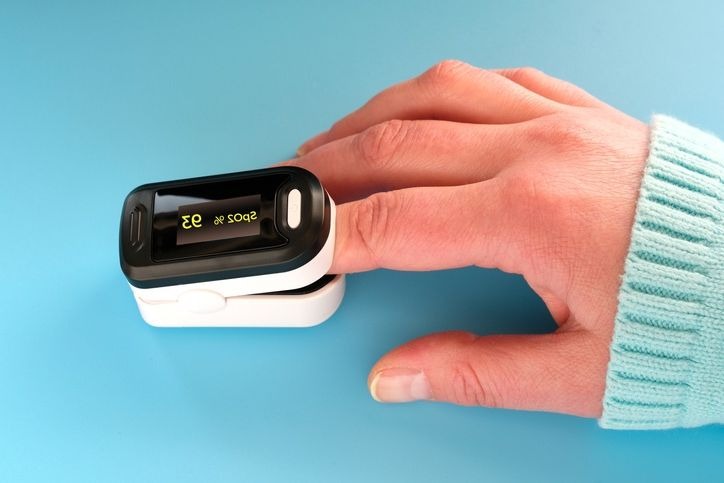How to increase its oxygen saturation?
Caution : You must consult your doctor for your health. This page presents only a personal and alternative point of view which should not be considered as an attempt to prescribe medicine.
The proper functioning of the human body is mainly dependent on a gas called oxygen.
This substance contained in the atmospheric air that we breathe has the role of keeping us alive.
To assess its content in the blood, there are measurement indices known as oxygen saturation.

The latter when it is below a certain threshold becomes problematic for health.
What to do in this case?
Understanding oxygen saturation
When we breathe, we breathe in air that lands in our lungs.
At this level, a gas exchange occurs: the oxygen contained in the breathed air is absorbed by the blood which itself returns to the lungs excess carbon dioxide for removal.
Enriched by oxygen from the lungs, the blood now contains a given amount of oxygen lodged in red blood cells.
The determination of the oxygen value at this stage is called: oxygen saturation.
From the above, oxygen saturation is the amount of oxygen available in the blood after passing through the box: lungs.
It can be measured either by taking a blood sample from an artery or using a device called a pulse oximeter or oximeter.
A normal level of oxygen saturation is between 94% and 100%.
NOTE: Your body will do everything to maintain maximum oxygen in the blood. It can store up to about 100 seconds of oxygen, or even more, depending on the number of red blood cells.
Below this value, we speak of insufficient oxygen saturation and in more serious cases of desaturation.
This O² insufficiency can be explained either by respiratory problems in the individual in question, or by a low oxygen content of atmospheric air (at altitude for example).
However, in either case, there are solutions to increase the rate of oxygen saturation.
Techniques to increase your oxygen concentration in the body
They can be grouped into three main categories viz.
Improve your breathing
When the deviation from the normal rate of oxygen saturation is not very high (between 90 and 94%), breathing exercises can be used to increase oxygen.
First, it is important to control the rate of breathing.
Deeper breathing (with the diaphragm rather than the thorax) and much slower (at the rate of 10 breaths per minute) is ideal for bringing more oxygen into the body.
Secondly, breathing exercise with exhalation vocalization is also effective.
It consists of inhaling through the nose (2 to 5 seconds) and then exhaling through the mouth while vocalizing a sound very slowly (AHHHHHH).
The exhalation should be as slow as possible (about 6 to 20 seconds).
However there is no frequency of execution, the exercise is done at will when you feel like it.
Third, improving breathing for increasing oxygen saturation can be done through relaxation exercises like yoga.
The use of a breathing coach can also be considered in order to have more supervised activities and avoid any risk of injury because Yoga is not without danger.
Adopt a healthier lifestyle
Daily lifestyle habits have a significant influence on oxygen saturation.
To increase this constant, it is essential to review your lifestyle and adopt some healthier behaviors.
So hydrate regularly with quality mineral water and also consume foods rich in minerals.
Practice regular sports activity to maintain good breathing and lose excess weight, if there is any.
Favor the pure and fresh air of Nature to the detriment of artificial air (air conditioner, fan, polluted air in cities, etc.).
Also, avoid all substances containing tobacco.
Indeed, tobacco is extremely harmful to the lungs.
Its presence will only decrease their performance and further reduce the rate of oxygen saturation.
In the long term, regular smokers risk developing chronic obstructive bronchitis (COPD).
Comply with the medical advice of your doctor
Doctors are the only ones who can prescribe treatment in the event of insufficient oxygen saturation.
They can either offer supplemental oxygen cylinders or drug prescriptions.
In any case, to achieve the desired results, you must adhere to the requirements, dosages and frequencies recommended by your medical specialist.
In general, self-medication comes with huge risks, so avoid it.
It is therefore a solution that must be banned, even more in a situation of oxygenation failure which involves the vital functions of the body.
So, it is necessary to discuss with his doctor.
The discussion promotes a better understanding by the patient of the prescribed treatments.
Conversely, it helps the doctor to better understand the evolution of prescriptions and to readjust them if necessary.
In conclusion: how to better oxygenate your blood?
Low oxygen saturation is not an irreversible situation.
Medical treatment, healthier lifestyle habits, and breathing exercises help normalize the oxygen content in the blood for proper functioning of the body.
Before seeing a doctor, try some breathing exercises and better, go out for a walk for a few hours, making sure you have a diaphragmatic breathing, it will change your life.
❤ The ultimate guide to breathing
Intermittent Breathing : Discover the method to quickly relieve your anxiety and chronic fatigue (positive effects from the first use).Read also :
Previous article : How to learn diaphragmatic breathing in sophrology?
Next article : How to breathe well and push during childbirth?

